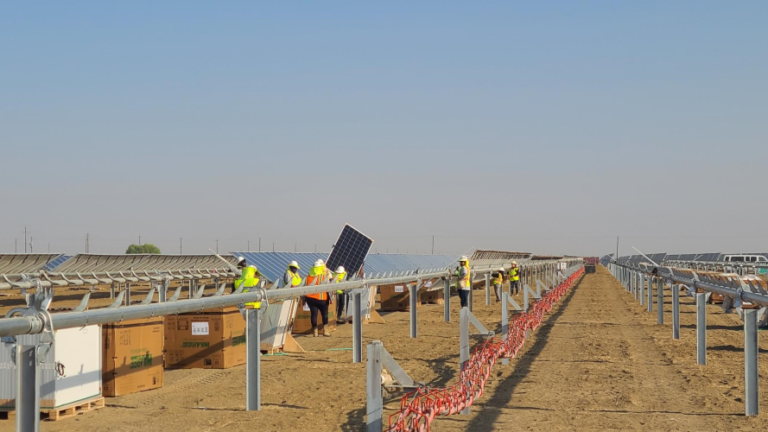
On Sept. 30, CIM announced it had completed construction and launched operations in the first phase of its 20,000-acre Westlands Solar Park, which takes up parts of western Fresno and Kings counties. For this first phase, known as Aquamarine, CIM had previously signed contracts with Valley Clean Energy Alliance and Silicon Valley Power to deliver up to 125 megawatts of solar power.
Achieving commercial operation follows the approval by both Pacific Gas & Electric, a subsidiary of San Francisco-based PG&E Corp., and the Folsom-based California Independent System Operator to connect the generation facility to the state’s power grid. The Aquamarine project began commercial operations on Sept. 17.
CIM’s contract with Davis-based Valley Clean Energy Alliance allows for delivery of up to 50 megawatts of solar power, and its contract with Santa Clara-based Silicon Valley Power calls for up to 75 megawatts of power. Financial terms of the two contracts were not disclosed.
“Bringing clean solar power to California from Aquamarine is a major milestone in the realization of the full potential of our 20,000-acre Westlands Solar Park,” Avi Shemesh, one of CIM’s three co-founders and principals, said in the announcement.
CIM first announced its Westlands Solar Park project in 2014.
Shemesh noted that when all of the other phases of Westlands Solar Park are built out — at a projected cost of between $4 billion and $5 billion — the entire facility will have the capacity to generate 2.7 gigawatts of solar power. A gigawatt is 1,000 megawatts; one megawatt can power about 250 single-family homes in California, according to Solar Energy Industries Association. At full buildout, the solar park could eventually power roughly 675,000 homes.
He called the entire Westlands project “a substantial resource to utilities and businesses advancing their plans to reduce carbon emissions and meet California’s renewable energy goals.”
This is not CIM’s first foray into solar power generation.
CIM has also developed other infrastructure projects, including data centers, water supply and waste management projects. One example is a 7.3-acre, 242,000-square-foot data center in San Francisco, which CIM completed last year. The project connects to more than 15 fiber networks operated by global telecommunications carriers.
In 2008, CIM acquired 68,000 acres of land in Kern County and set about improving irrigation and other water conveyance networks on the parcel, which it calls Kelso Valley Wind, Solar & Water.
And in a January 2018 filing with the Securities and Exchange Commission, CIM said it had raised $576 million for its second infrastructure fund. Press reports at the time cited material then on CIM’s website indicating the proceeds would be used for renewable energy generation, water management, and parking and urban transportation facilities.
